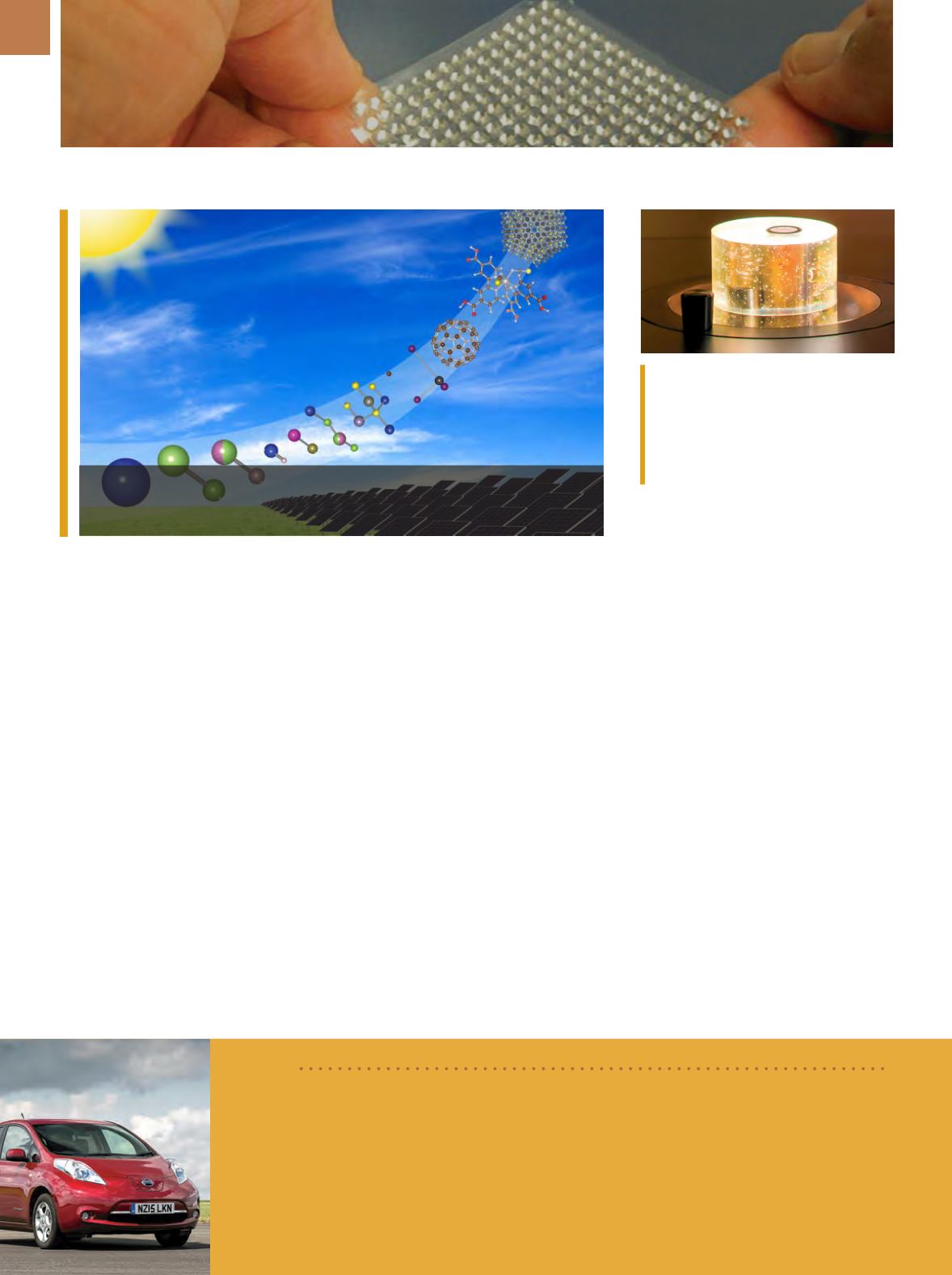

A D V A N C E D M A T E R I A L S & P R O C E S S E S | M A Y 2 0 1 5
1 4
OVERCOMING SOLAR
POWER CHALLENGES
In a broad new assessment of the
status and prospects of solar photovol-
taic technology, Massachusetts Institute
of Technology, Cambridge, researchers
say it is “one of the few renewable, low-
carbon resources with both the scalabil-
ity and technological maturity to meet
ever-growing global demand for elec-
tricity.” Solar photovoltaics use is grow-
ing at a phenomenal rate—worldwide
installed capacity has seen sustained
growth averaging 43% per year since
2000. To evaluate the prospects for sus-
taining such growth, researchers look at
possible constraints on materials avail-
ability and propose a system for evaluat-
ing the many competing approaches to
improved solar-cell performance.
The report divides the many tech-
nologies under development into three
main classes: Wafer-based cells, which
include traditional crystalline silicon, as
well as alternatives such as galliumarse-
nide; commercial thin-film cells, includ-
ing cadmium telluride and amorphous
silicon; and emerging thin-film technolo-
gies, which include perovskites, organic
materials, dye-sensitized solar cells, and
quantum dots.
web.mit.edu.
BUILDING A SUPER BATTERY
A new book by Steve LeVine,
The
Powerhouse: Inside the Invention of a
Battery to Save the World,
takes an in-
side look at Argonne National Laborato-
ry’s (Lemont, Ill.) research into building
a super battery. The book, according
to Levin, lays out the high stakes of
the battery race: The winner would
steer geopolitical power away from
Russia and the Middle East, dominate
the production of affordable electric
cars, and mitigate climate change by
transforming the electric grid, drasti-
cally reducing fossil fuel consumption.
For LeVine, a veteran reporter for the
Wall Street Journal, The New York Times,
and
Newsweek,
finding the epicen-
ter of American battery research was
easy. Argonne employs several of the
world’s top experts, including Michael
Thackeray, a pioneer in the lithium bat-
tery technology inside the hybrid-elec-
tric vehicle Chevy Volt. But while the
lab’s work is no longer top secret, it
still took LeVine a year to gain permis-
sion to embed himself within the lab.
Even after the Department of Energy
granted approval, Argonne’s scientists
had reservations about LeVine spend-
ing two years with them. Although he
didn’t witness a major scientific break-
through, LeVine’s book culminates with
Argonne’s successful 2012 bid to host
the DOE’s battery innovation hub, to be
modeled after the scientific manage-
ment characteristics of the Manhattan
Project.
stevelevinebooks.com,
anl.gov.
Complexity increases from the simplest material, pure silicon (single atom, lower
left), to the most complex material currently being studied for potential solar cells,
quantumdots (molecular structure, top right).
Argonne National Laboratory coordinates
nationwide battery research through the
Joint Center for Energy Storage Research,
in an initiative that aims tomake batteries
five times more powerful and five times
cheaper within five years. Courtesy of ANL.
BRIEF
Five years and more than 35,000 European sales since the launch of its all-electric LEAF vehi-
cle, proprietary data released by
Nissan Motor Corp.,
Switzerland, shows that the failure rate
of the battery power unit is less than 0.01%—just three units in total—a fraction of the equiva-
lent industry-wide figure for defects affecting traditional combustion engines. With only three
main components—the on-board charger, inverter, and motor—Nissan says the LEAF is 40%
cheaper to maintain compared to petrol or diesel-powered alternatives.
www.nissan.co.uk.
ENERGY TRENDS
Nissan LEAF. Courtesy of Business Wire.


















